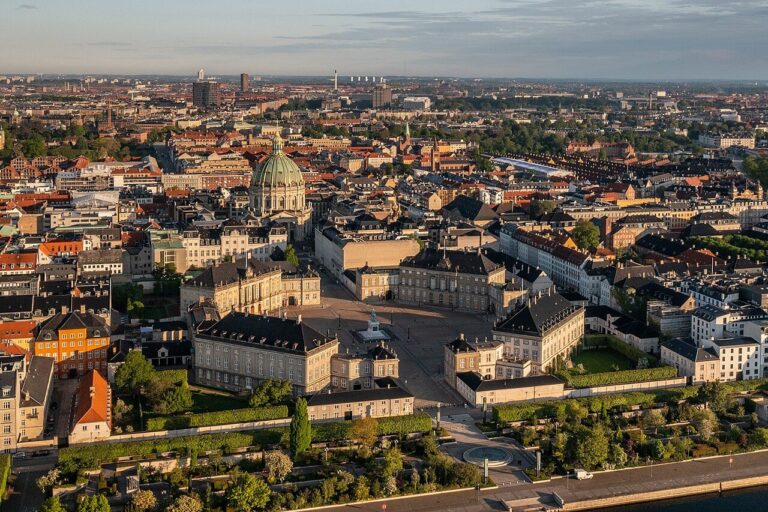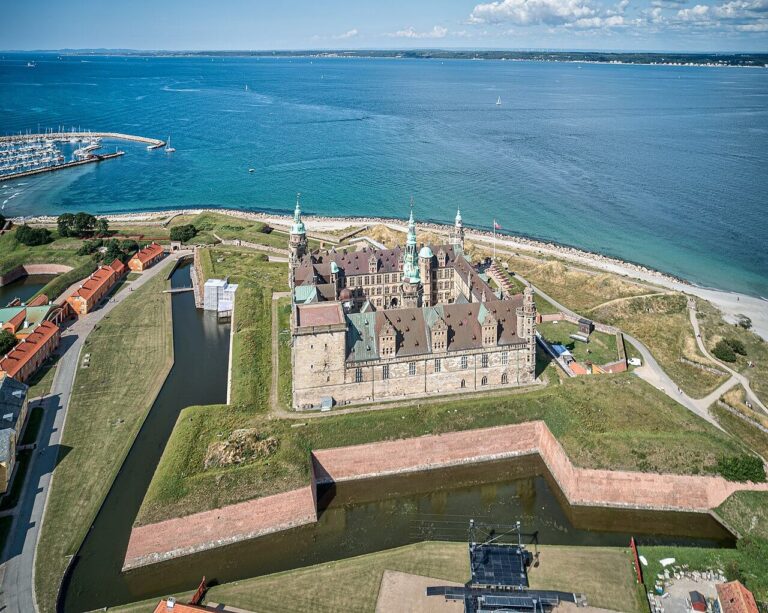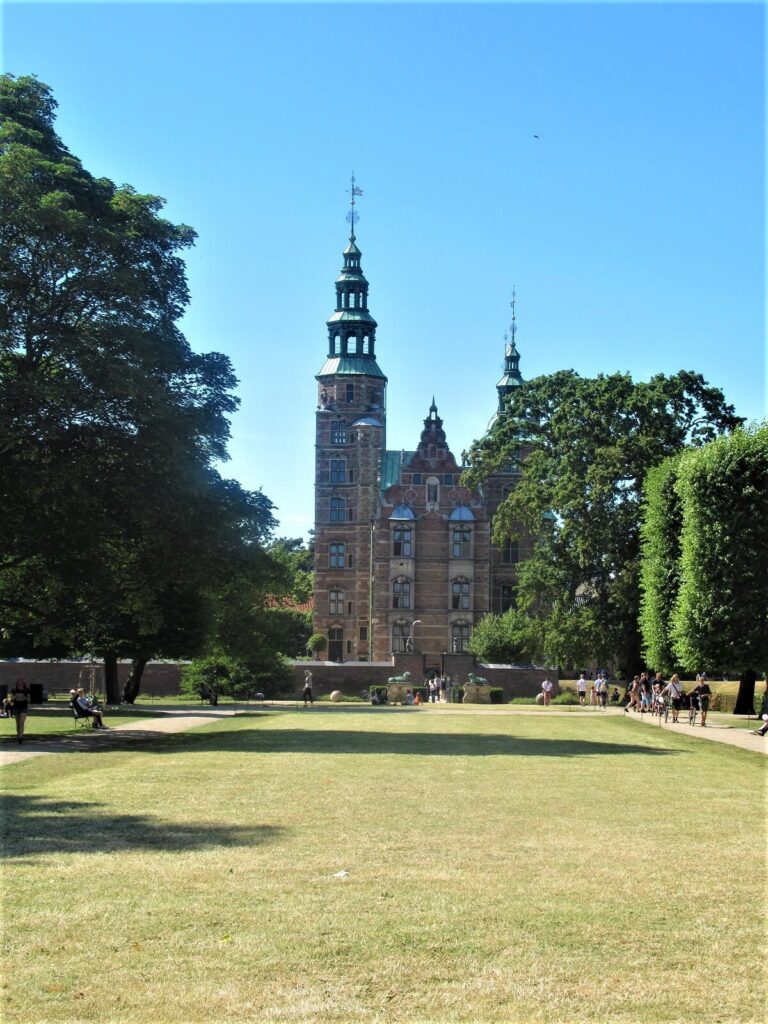Castles and Manor Houses on Funen in Denmark
On the Danish island Funen you find many beautiful castles and manor houses. Funen is the third largest island of Denmark, with Odense being the largest city. Funen is a rather small island, so every castle and manor house is easily reached with Odense as your base.
Odense is also the birthplace of author Hans Christian Andersen. In Odense, you will find a museum dedicated to the famous author. But on the island of Funen you will also find castles and manors that have a link to Hans Christian Andersen.
In this post, you will find the castles and manors on Funen. Find out more about the history of these historic homes if you can visit them and if they have a link to the famous Danish author.
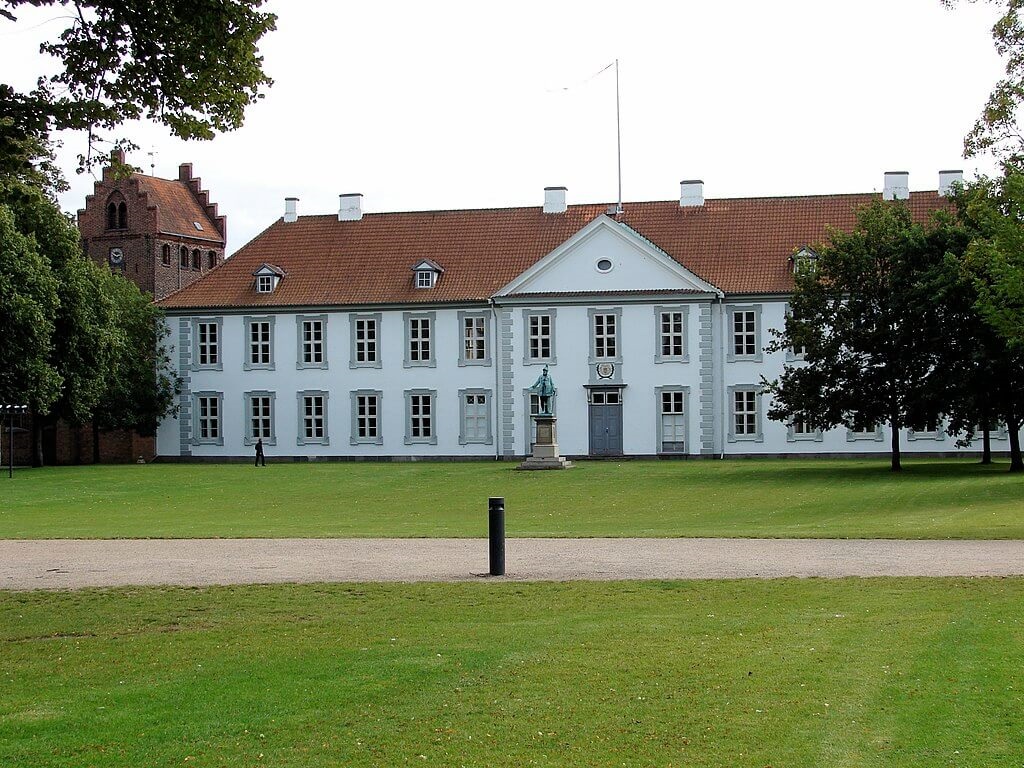
Odense Castle
Where: Odense – Built: 1723 – Style: Baroque
Odense Castle (Odense Slot) is a Baroque palace in the city center of Odense. The castle is designed by J.C. Krieger (the gardener of Rosenborg Palace).
The Palace is built on the site of a former monastery, but since 1536 the palace has been owned by the Royal family. In 1723 a new palace was built for King Frederick IV. And later, Christian VIII (King of Denmark and Norway) lived in the castle.
Connection to Hans Christian Andersen: Hans Christian Andersen’s mother worked at Odense Castle, and he visited the castle as well. As a boy, Hans Christian played with the future King Frederick VII.
Odense Castle visitor information: The Odense City Council uses the castle and can not be visited. But the surrounding Royal Gardens are open tot the public.
Address: Nørregade 36, 5000 Odense C
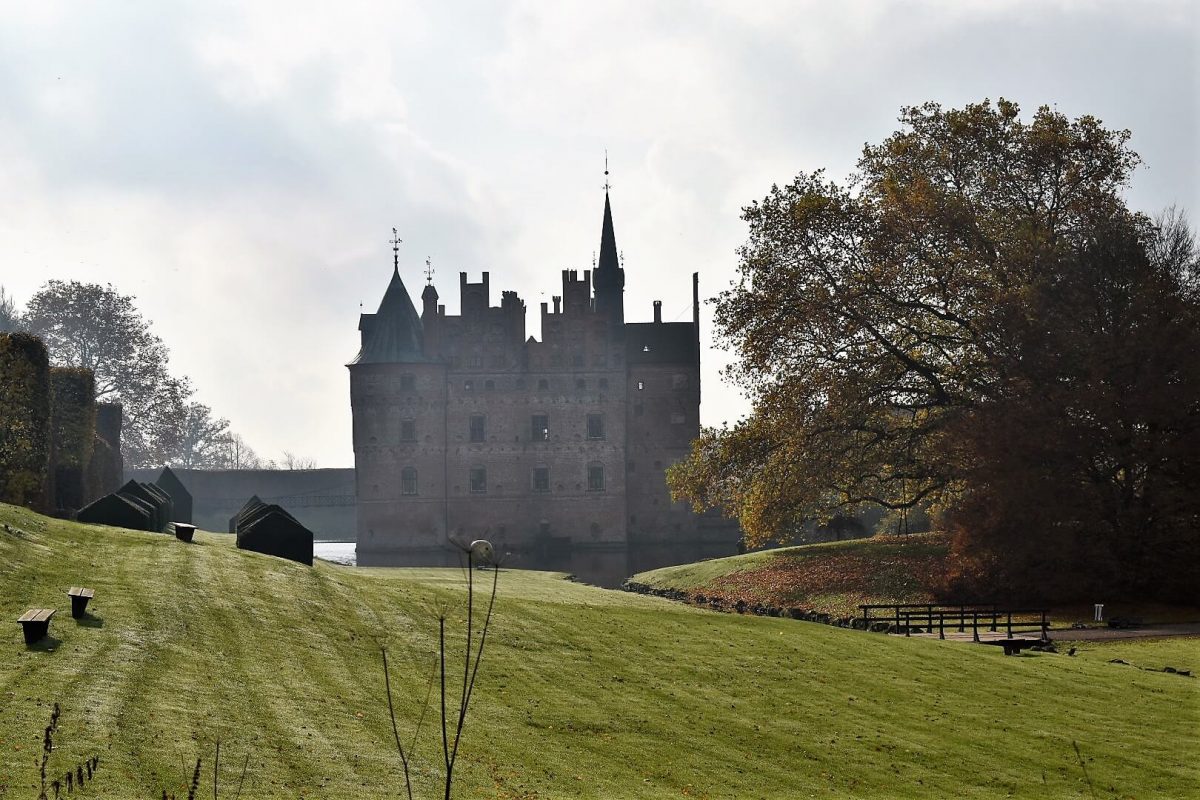
Slot Egeskov
Where: Kværndrup – Buikt: 1554 – Style: Renaissance & Gothic
Egeskov Castle is the best preserved Renaissance water castle in Europe. The castle was built in 1554 by Frands Brockenhuus. The castle has been owned by some of the most important noble families in Denmark. Currently, it is owned by the Bille family.
Surrounding the castle are several gardens. Including a Renaissance garden, an English garden, and a Fuchsia garden.
Egeskov Castle visitor information: Egeskov Castle and the gardens are open for visitors. There are also several museums on the grounds, such as a vintage automobile and motorcycle museum.
Address: Egeskov Gade 18, DK-5772 Kværndrup
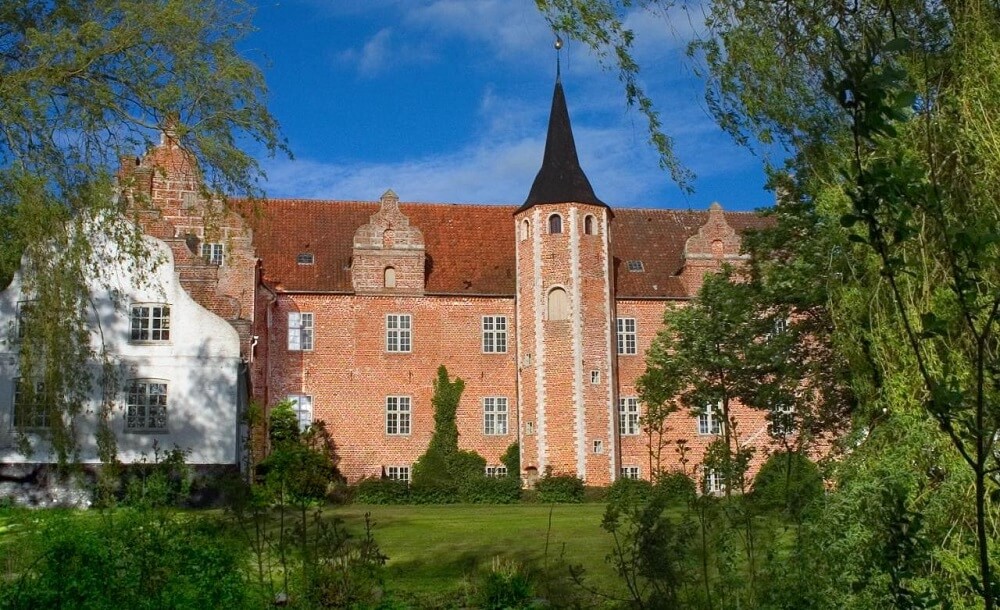
Harridslevgaard Slot
Where: Bogense – Built: 1606 – Style: Renaissance
The castle is first mentioned in 1231, and according to legend, it was a pirate castle. However, the current castle was built in 1606 in the Renaissance style.
The castle has a 400m2 Knights Hall, which is the biggest in private ownership. The castle also has a Medieval cellar. Surrounding the castle are gardens with peacocks.
Harridslevgaard Castle visitor information: The castle is open to visitors on specific days throughout the year. For current opening days, you can visit the website. There is also a holiday rental apartment in the castle.
Address: Harridslevgaard Slot, Assensvej 3 · 5400 Bogense

Skjoldemose Manor
Skjoldemode Manor is a historic house on Funen whose history goes back six hundred years. The current manor was built by Otto Krag, who was a member of the royal council of King Frederik III.
Skjoldemose is one of the oldest manor houses in Denmark and one of the country’s few late Renaissance buildings. Since the early 20th century, the Ulitch family has owned the manor. The manor is located in beautiful hilly terrain between Stenstrup and Vester Skerninge.
The manor, Skjoldemose Gods, is the only manor in Denmark where your group can experience the home visit of a private estate and farm and learn how to bake traditional danish butter cookies. But the grounds and surroundings have more to offer. Visit the garden that may have inspired Hans Christian Andersen’s fairy tale “Thumbelina”, explore South Funen’s lovely nature, or visit the nearby adventure trail in the Old Woods, which is great for children
Skjoldemose Manor visitor information: a visit to the manor has to be pre-booked. Visit the website for more information.
Address: Rødmevej 45, 5771 Stenstrup, Denmark

Valdemars Slot
Where: Tåsinge island – Built: 1639-1644
Valdemars Castle is a grand manor house designed in the 17th century by Hans van Steenwickel. The manor was commissioned by King Christian IV, and it was meant to become the home of his son Valdemar Christian. However, his son never lived in the house because he was killed in 1656. In the end, the castle was given to naval hero Niel Juel after his victory over Sweden.
Today the 11th generation of the Juel family lives at Valdemars Castle.
Valdemars Castle visitor information: The manor house is open to the public. The estate includes a hunting museum.
Address: Slotsalleen 100, 5700 Svendborg

Tranekær Slot
Tranekær Castle is the oldest lived-in building in Denmark. The castle has a Royal history that dates back to the 12th century when it was built by King Valdemar.
In the 17th century, the castle was given to Christian Rantzau. And his descendants still live in the castle today.
The current appearance of the castle comes from a renovation in the 19th century. The English red color was added in the mid-20th century.
Tranekær Castle visitor information: The castle is open for guided tours on specific days in the Summer. For the most current information, you can check the website.
Address: Slotsgade 86, 5953 Tranekær

Sanderumgaard
Where: Odense – Built:1870 – Known for: Romantic Gardens
Sanderumgaard is a manor house that was first mentioned in 1468. The main building was built in 1870 by architect Hans J. Holm.
The manor house has one of the first Romantic Gardens in Denmark. John Bülow bought Sanderumgaard in the late 18th century. He had been introduced to English garden design after working with Johan Ludvig Mansa.
Though an amateur gardener, he worked on the Romantic garden until his death. And it is now one of the finest Romantic Gardens in Denmark.
Sanderumgaard visitor information: The gardens are open all year round, but they are best visited in Spring and Summertime.
Address: Sanderumgaardvej 150, 5220 Odense SØ
Glorup Manor
Where: Ørbæk – Built: 1765 – Style: Baroque
Glorup Manor is a manor house in the Baroque style. The house was built in 1765 after the design of Nicolas-Henri Jardis and Christian Josef Zuber. The Baroque manor is one of the finest Baroque houses in Denmark.
The estate also houses a 19th-century chapel in Neo-Gothic style. As well as a French Baroque garden and an Anglo-Chinese landscape garden.
Hans Christian Andersen frequently visited Glorup Manor. He liked the Italian-style house with English gardens.
Glorup Manor visitor information: The gardens are open to the public from April-September; Thursday-Sunday.
Address: Glorupvej 26, 5853 Ørbæk
Krengerup Gods
Where: Glamsbjerg – Built: 1772-1783 – Style: Neoclassical
Krengerup is a neoclassical manor house near Glamsbjerg. The current house was built in the 1770s, and since then, it’s been owned by the Rantzau family.
The property is still used as an agricultural enterprise. But there are also two museums located at Krengerup: the Flax Weaving Museum and the Škoda Museum.
Krengerup visitor information: You can visit the museums at Krengerup, and the grounds are also open to visitors.
Address: Krengerupvej 96, 5620 Glamsbjerg
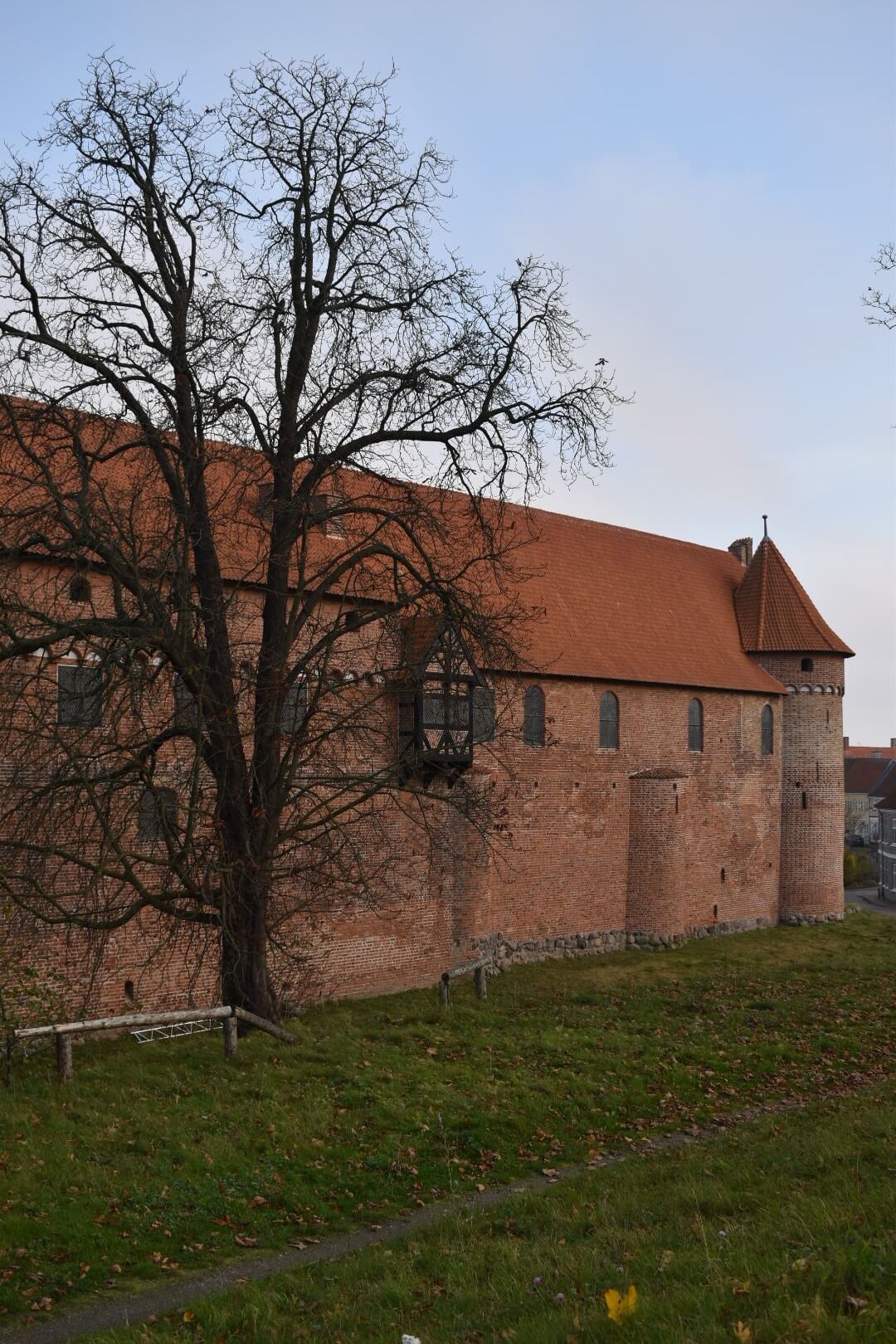
Nyborg Slot
Where: Nyborg – Built: 13th century (with later additions) – Style: Medieval
Nyborg Castle is a restored Medieval Castle in the town of Nyborg and the oldest Royal castle in Denmark. Nyborg Castle holds an important role in Danish history. Here, King Eric V Klipping signed Denmark’s first constitution in 1282. And the castle also houses the Danehof (the country’s first parliament).
Most of the castle was destroyed after the Dano-Swedish War in the 17th century. The buildings you see today used to store grain or gunpowder.
Nyborg Castle visitor information: The castle is currently closed for renovation work. It will open again in 2023 with restored halls and new exhibitions.
Address: Stendamsgade 9, 5800 Nyborg

Holckenhavn Slot
Where; Nyborg – Built: 1590 – Style: Renaissance
Holckenhavn Castle is a manor house that dates back to 1590. The house was built over the course of 3 generations in the 16th and 17th centuries. In 1672 the manor was bought by Eiler Holck (who founded the Barony of Holckenhavn). The manor is still owned by the same family.
Holckenhavn visitor information: The castle is rented out for events. But the 12-hectare park surrounding the castle is open to visitors.
Address: Holckenhavn 1, 5800 Nyborg

Hvedholm Slot
Where: Faaborg – Built: 1588 (rebuilt in 1880)
Hvedholm Castle was orignally built in 1588. But it was rebuilt in 1681 after a fire and again in 1878 after a design by Johan Schrøder.
Currently, Hvedholm Castle is a castle hotel with 62 rooms.
Address: Hvedholm Slot 1, 5600 Faaborg
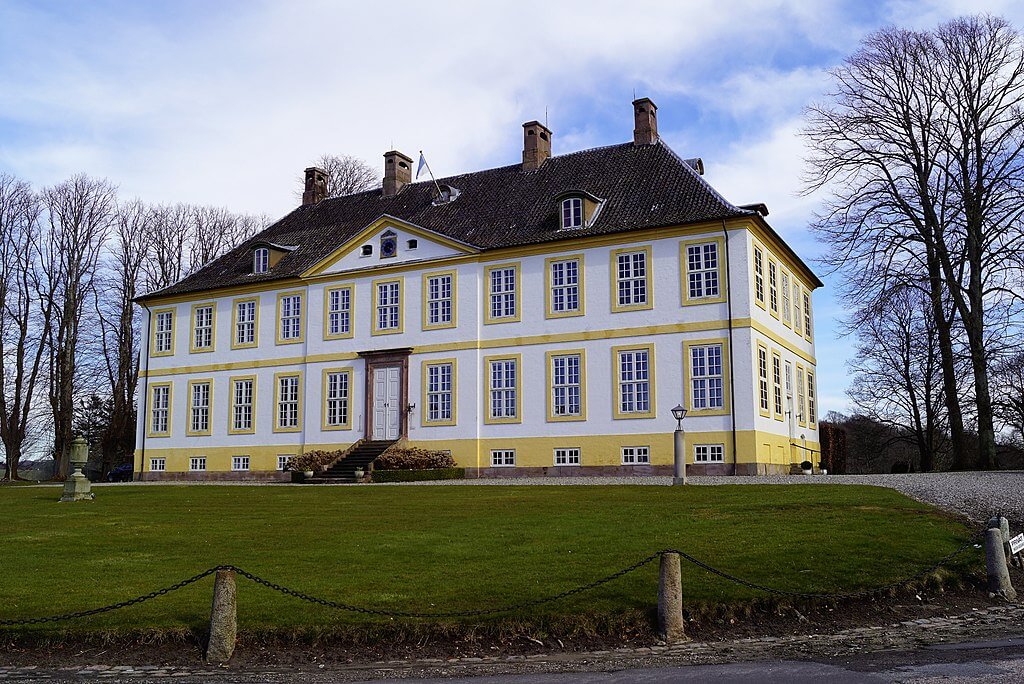
Hagenskov Gods
Where: Ebberup – Built: 1775 – Style: Neoclassical
Hagenskov Manor House is a neoclassical house designed by G. E. Rosenberg for Niel Ryberg. In the 19th century, Crown Prince Frederick (later King Frederik IV) divided his time between Odense Castle and Hagenskov (though at that time, it was called Frederiksgave).
Hagenskov Manor visitor information: The manor house is now used as an agricultural enterprise. But the manor can be viewed from the public road.
Address: Slots Alle 1, 5631 Ebberup
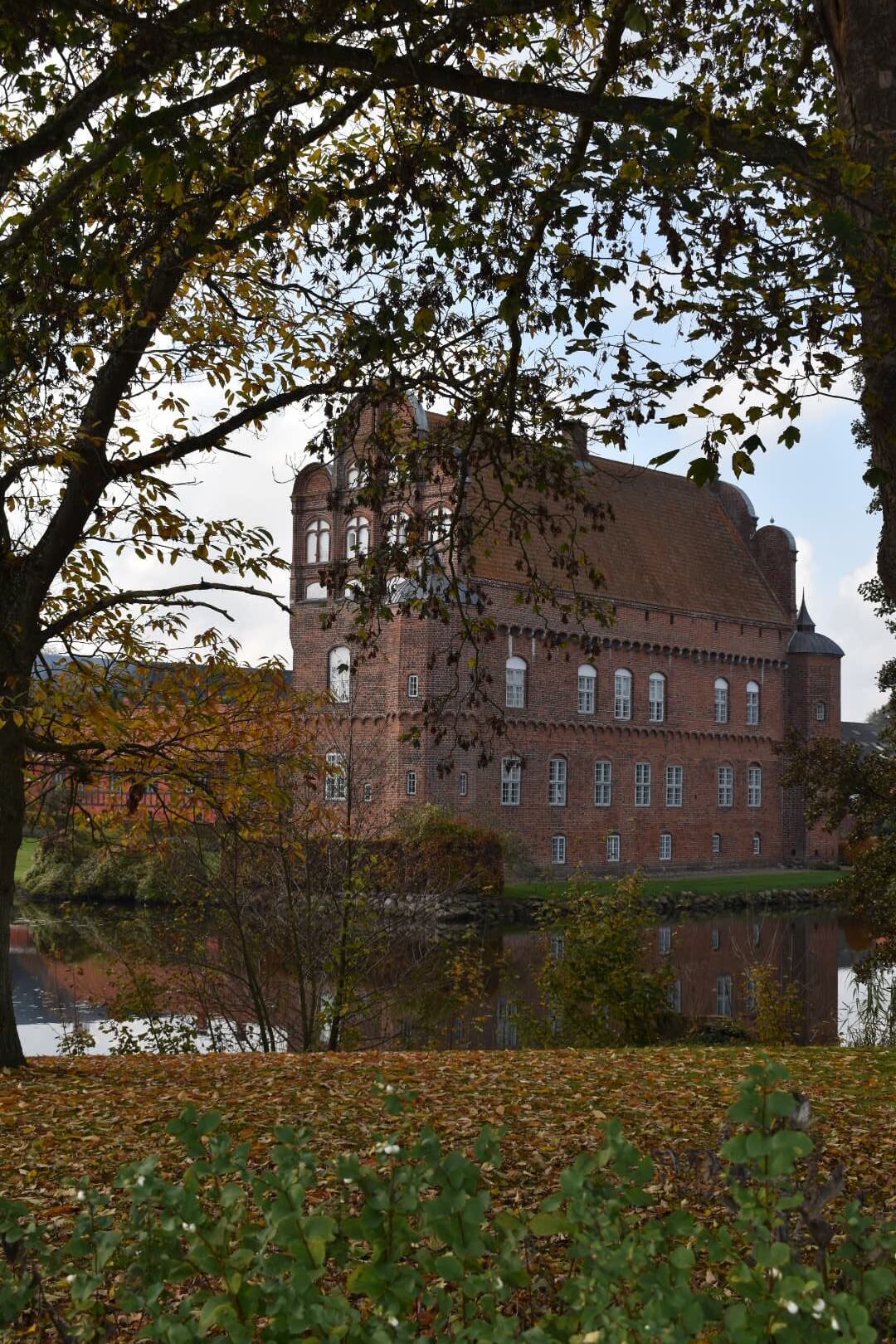
Hesselagergård
Where: Hesselager – Built: 1538-50 – Style: Renaissance
Hesselager Manor is the oldest Renaissance building in Denmark. The manor was built by one of the most powerful men in Denmark: Johan Friis.
In 1850 Hans Christian Andersen visited Hesselager Manor. He mentioned the visit in his diary, where he says he felt ill at ease when he saw the portraits of the Duke of Augustenborg and the Prince of Nør “plastered on the walls of the lavatory”.
Hesselager Manor visitor information: The manor is not open to the public, but you can view it from the public road.
Address: Hesselagergårdsvej 20A, 5874 Hesselager

Arreskov Slot
Where: Faaborg – Built: 16th century (rebuilt 1872) – Style: Renaissance/Baroque
Arreskov is a Manor House overlooking Lake Arreskov. The manor house was originally built in the 16th century in the Renaissance style. But the remodel in the 19th century added Baroque elements to the manor house. Since 1773 the house has been owned by the Schaffalitzky de Muckadell family.
Arreskov Slot visitor information: The manor house is privately owned
Address: Arreskovvej 12, 5600 Faaborg
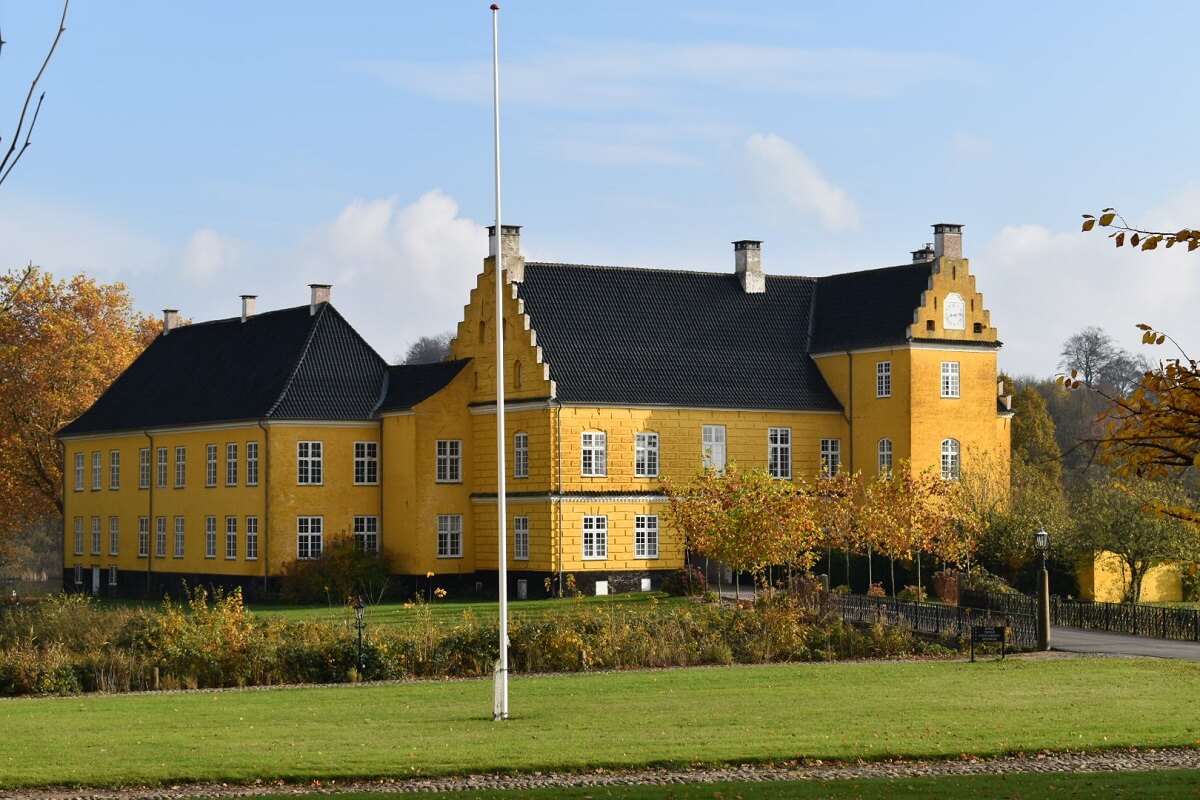
Lykkesholm Slot
Where: Ørbæk – Built: 1600
Lykkesholm Castle is a bright yellow manor house near Ørbæk.. The main building dates back to 1600. But the manor was remodeled in 1668 and between 1784-86.
Hans Christian Andersen also visited Lykkesholm, as he was close friends with the Lindegaard family, who owned the castle in those days.
Lykkesholm visitor information: Lykkesholm is now a hotel, wedding venue, and conference center
Address: Lykkesholmsvej 20, 5853 Orbæk
Hvidkilde Gods
Where: Svendborg – Built: 1550 & 1742 – Style: Baroque
Hvidkilde is a farm estate in the forest near Svenborg. The main building is built in 1550 and later rebuilt after a fire broke out. The two wings date from 1742. After the 18th-century expansion, the estate now has a Baroque appearance outside and inside.
Hvidkilde Gods visitor information: The manor house is not open to the public. The Baroque Grand Hall can be rented for special occasions.
Address: Fåborgvej 260, 5700 Svendborg
